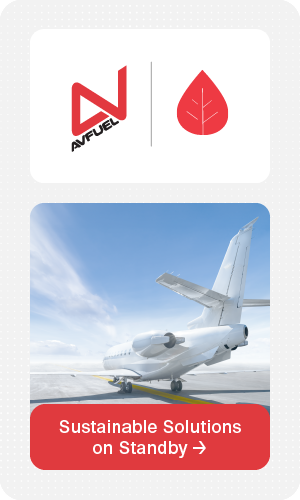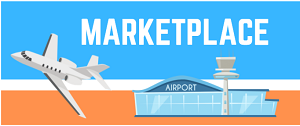The National Air Transportation Association and its members have always prioritized safety, evidenced by NATA’s Safety 1st Training Center, the association’s most enduring resource. Now, leaders in the aviation insurance community say safety is more important than ever from a liability perspective as “nuclear verdicts” – astronomically increased jury awards from lawsuits – have entered the chat.
In 2019, a review by VerdictSearch found a 300 percent increase in the frequency of verdicts of $20 million or more compared to the national average from the previous decade, 2001-2010. In some industries the increase in exceptionally high verdict amounts has been more profound, as much as 1000 percent.
“The issue of disproportionate and emotional responses in jury verdicts is not limited to aviation – it is in fact a problem that has no industry boundaries,” says Jon Downey, President of AssuredPartners Aerospace. “While verdicts in aviation cases have always been more substantial than those in other transportation related cases, the trucking industry, for example, has also felt the impact of nuclear verdicts. The American Transportation Institute published a research paper in June 2020, The Impact of Nuclear Verdicts on the Trucking Industry, which found that the average size of verdicts from 2010 to 2018 increased from approximately $2.3 million to approximately $23 million, a 1000 percent increase. The trend is not slowing down.”
Insurers call such increases “social inflation,” dubbing the phenomenon of jury awards over $10 million “runaway litigation.”
Downey attributes the trend to “changing cultural attitudes driven by social media regarding responsibility after a loss, along with a desensitization to and normalization of large verdicts in general, driven by a strong plaintiffs’ bar.”
Such social inflation can also be attributed to tort reform rollbacks in recent decades, shifts in public perception around litigation, the proliferation of class-action lawsuits, growing mistrust of public corporations, rising costs of medical care for plaintiffs after accidents, and increases in third-party litigation funding (third-party investors providing funding for plaintiff’s litigation costs in exchange for part of the eventual payout). And it appears to be creating a snowball effect: as awareness of inflated jury awards increases, litigants pursue ever-higher award amounts and juries seem increasingly willing to approve them.
While Downey is correct that the trend is not unique to the aviation industry, examples of jury awards well above $10 million in aviation-related cases involving fatalities or catastrophic injuries have abounded in the last decade:
A $115 million settlement against National Air Cargo from a 747 crash in 2013. A $100 million settlement against Airbus Helictopters and Air Methods Corp. stemming from a 2015 Flight For Life helicopter crash in Colorado in which a flight nurse suffered burns on more than 90 percent of his body. A $63 million wrongful death suit against Southwest Airlines following a medical emergency on a flight in 2014. A $115 million settlement against Chicago O’Hare Airport stemming from a 2015 incident in which an airport-owned bus shelter blew over and paralyzed the plaintiff. A $352 million settlement in November 2021 against United Airlines after a 2019 incident that permanently paralyzed a ground worker at Houston’s George Bush Intercontinental Airport, the largest award of its kind to date in the aviation industry. And the list goes on.
Each of the above cases involves the kinds of catastrophic injuries or fatalities that have always garnered deservedly large legal settlements or awards; what has changed is the rate of increase in the amount of those awards – in some cases tenfold, hundredfold, or thousandfold over what might have been expected just a decade ago.
“NATA members are playing close attention to these alarming headlines, changing their approach to liability insurance coverage, and doubling down on their commitment to safety programs, training, and accident prevention best practices,” says NATA Executive Vice President Ryan Waguespack.
Downey points to NATA’s Safety 1st and other risk mitigation efforts as the first line of defense for any aviation business looking to avoid such punitive lawsuits.
“The only way to prevent a nuclear verdict is to prevent an accident from happening in the first place,” Downey says, focusing on the most practical advice. “Safety, training, and documentation are key in preventing the susceptibility to a large, adverse legal award.”
John Brogan, President & CEO of USAIG – the oldest aviation insurance company in the United States and among the largest – says he believes the dramatic increases in legal awards come from plaintiffs “hearing large numbers referred to in media all of the time, combined with no understanding of where the money comes from to pay these amounts.”
Brogan says he doesn’t believe most current aviation insurance premiums adequately factor in the potential for increased legal awards. “It is an overall insurance problem, not just aviation,” Brogan says, noting that he also sees deficits in the aviation reinsurance market: “All calculations need to account for higher possible outcomes, and the trend is not letting up.”
Like Downey, Brogan says prevention is the primary means for an insured aviation business to lower its susceptibility to a large adverse legal award.
“Implement the best possible avoidance and mitigation practices available,” Brogan says, noting that “fewer overall losses reduce the chance of a high-severity loss.”
In addition to that step, which most NATA members have already taken, Bill Kingsley, Vice President of AssuredPartners Aerospace, advises aviation businesses to reevaluate the kinds and amounts of liability coverage they carry and to acknowledge the increased cost of addressing liability risks and settling claims.
“Simply put, what ten years ago would have been a million-dollar claim could easily be 10 to 20 times that amount nowadays,” Kingsley says. “And what we would have considered an outrageously high claim a decade ago – maybe $25 million – today could be $250 to $350 million, or even more.”
While terms like “nuclear verdict,” “social inflation,” and “runaway litigation” are obviously loaded, Kingsley says he makes no personal judgment about the size of such awards and settlements: he believes they reflect changing perceptions about liability that are here to stay. Increasingly large awards and settlements have already impacted the cost and risk of doing business in the aviation industry, and Kingsley predicts that such amounts are only likely to get bigger. His goal is to help educate aviation business owners about how to better prepare for them.
“In 2021 a gentleman was awarded $352 million for injuries,” Kingsley says, referring to the public jury award following the 2019 United Airlines incident in Houston. The amount included approximately $287 million for damages suffered by the plaintiff, with additional damages awarded to the plaintiff’s wife and children. “His injuries are horrific and life-changing: as a quadriplegic, he now requires 24-7 care. His life as he knew it was over the minute that accident happened, so I’m not going to sit here and say it isn’t worth the $352 million award – it is what it is and what we’ve seen is that juries are increasingly likely to side with the plaintiff in awarding these large amounts. What I am going to say, though, is that we in the aviation insurance industry are finding it much more difficult now than in the past to determine what potential claims could conceivably cost and to plan accordingly.”
Kingsley is direct in his advice to NATA members.
“The simple fact is that if you are the owner of a business you should be having a discussion with your broker to discuss the limits that you’re carrying,” he says. “You should be considering carrying a higher limit of liability coverage, because what you thought in the past was enough may not be enough – and might not be nearly enough – in today’s environment.”
Kingsley acknowledges the broad range of size, scope, and resources of NATA member businesses.
“We can certainly address that it’s not going to be a one-size-fits-all answer, so, for example, if you currently carry a $1 million limit, maybe you should carry $2 million, or if you carry a $50 million limit, maybe you should carry $75 or $100 million. Similarly, if you’re a thousand-person company, we know you’ve got whole safety departments; if you’re a smaller company, remember that NATA offers excellent safety programs that you can partake in at very little cost. The main thing is to recognize that the change is already happening: social inflation is with us today and will be with us tomorrow. I think it’s with us forever. Our job now, as always, is to plan for the best and be as prepared as possible for the worst.”






